Founded in Truth Fellowship - Bible Teachings and Sermons
Founded in Truth Fellowship is a Messianic Fellowship in Rock Hill, SC that provides Biblical teachings, fellowship, and resources for Biblical studies. Founded in Truth Fellowship is able to spread the gospel and the word of Yeshua because of supporters like you. If Founded in Truth has been a blessing to you or your family, we ask that you would give so that the same messages can bless others. To give to Founded in Truth Fellowship, click this link ”https://foundedintruth.com/give”
Episodes
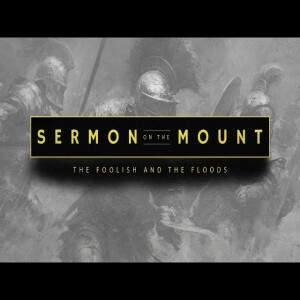
Sunday Jun 15, 2025
Sunday Jun 15, 2025
trim(replace(Sermon on the Mount - The Foolish and the Floods
In a compelling conclusion to the lengthy study of Yeshua's Sermon on the Mount, the teaching at Founded in Truth Fellowship delves into the parable of the wise and foolish builders, found in Matthew 7:24-27. This teaching, reminiscent of ancient wisdom parables, underscores the importance of building our lives on a stable foundation amidst life's storms.
Main Themes and Insights
The sermon begins by reflecting on the dualistic nature of life's choices as presented in the Sermon on the Mount. Yeshua highlights two paths, two gates, two houses, and ultimately, two decisions. The crux of the teaching is the contrast between choices leading to life and those leading to destruction. The imagery of two builders constructing houses on different foundations serves as a potent metaphor for the choices individuals make in their spiritual lives.
Yeshua's teaching doesn't provide a one-size-fits-all blueprint for life. Instead, it emphasizes that love and humility should form the basis of our choices. The story of the wise and foolish builders draws heavily on Israel's past, inviting the audience to consider what foundation they are truly building upon. "What are you really building your life upon?" is the pivotal question Yeshua poses.
Yeshua's Authority
One of the striking aspects of Yeshua's teachings is His authoritative voice. Unlike the rabbis of His day who relied heavily on the teachings of their predecessors, Yeshua speaks with unparalleled authority, likening Himself to Moses. The parallel drawn between Yeshua's ascent up the mountain to deliver teachings and Moses' ascent to receive the commandments further underscores Yeshua's authority. The audience's amazement at His teachings lies in this very authority and the revelation He brings.
The Role of Lady Wisdom
Another layer to understanding Yeshua's teachings is the role of Lady Wisdom, a metaphorical figure in Proverbs embodying divine wisdom. Yeshua's parables echo Lady Wisdom's warnings about the perils of ignoring divine wisdom. Emphasizing wisdom's role in life, Yeshua appeals to His audience to build their lives on the solid rock of His teachings, akin to the wisdom personified by Lady Wisdom.
Building on the Rock
Yeshua's reference to the rock in His parable resonates with His Jewish audience's understanding of the temple on Mount Zion—standing firm amidst chaos. By calling His followers a city on a hill, Yeshua invites them to represent God's kingdom on earth, built on the unshakeable foundation of His teachings.
Historical Context and Warnings
The parable also serves as a prophetic warning about the impending Roman invasion and the destruction of Jerusalem in 70 AD. Yeshua's generation faced dire choices between cultural assimilation with Rome or violent revolt. Both paths led to destruction, yet Yeshua offers a third way: the way of the kingdom, marked by surrender to God's power and wisdom rather than worldly pursuits of control and security.
Takeaways and Life Applications
Build your life on the solid foundation of Yeshua's teachings, not on fleeting worldly promises.
Embrace love and humility in all decisions, as these should underpin every action and choice.
Seek wisdom from divine teachings, recognizing the voice of God as the true guide in life's journey.
Acknowledge Yeshua's authority and allow His revelation to shape your perspective and actions.
Remember the historical and prophetic context of Yeshua’s teachings, learning from past mistakes to avoid future calamities.
Conclusion: Building the Kingdom
Ultimately, the teaching concludes by reinforcing that Yeshua doesn't offer mere survival tactics or happiness tips. Instead, He invites us into the kingdom of God, asking us to pledge allegiance to His eternal kingdom. The choice of foundation—sand or rock—determines our standing when life's inevitable floods come. Reflecting on what kingdom we are building prompts us to examine our allegiance and readiness for challenges.
Related Bible Verses
Matthew 7:24 - The parable of the wise and foolish builders
Deuteronomy 32:1 - Moses' speech warning Israel
Proverbs 1:20 - The voice of Lady Wisdom
Isaiah 8:7 - Assyria as a flood
Matthew 24:37 - Yeshua's warning of the coming flood
1 Corinthians 3:11 - Yeshua as the foundation
Recommended Resources
The Sermon on the Mount and Human Flourishing by Jonathan T. Pennington
The Divine Conspiracy by Dallas Willard
Simply Jesus by N.T. Wright
For more Bible Teachings, click here.Note: This article contains affiliate links.; "```html|\n|```"; ""))

Sunday May 25, 2025
Sunday May 25, 2025
trim(replace(Sermon on the Mount - Workers of Lawlessness
In a powerful sermon delivered by Matthew Vander Els at Founded in Truth Fellowship, the focus was on one of the most sobering warnings in the Sermon on the Mount. This section of the scripture, found in Matthew 7, challenges us to not only examine our spiritual activities but to align ourselves with the true kingdom of God. Vander Els emphasizes the importance of our hearts being in alignment with the teachings of Yeshua, especially the distinction between spiritual activity and spiritual alignment. The sermon ultimately calls us to a deeper relationship with God rather than just a superficial portrayal of righteousness.
Understanding the Two Paths
The Sermon on the Mount presents us with a choice between two paths: the way of the kingdom or the way of empire. Matthew Vander Els explains that the kingdom path is one of justice, mercy, and peace, while the path of empire is about power, performance, and self-righteousness. This dichotomy is essential to understanding Yeshua's teachings as they call for a transformation of our desires and motivations, moving beyond surface-level changes to a deep reshaping of our lives.
The Warning of Spiritual Maturity
Yeshua's words in Matthew 7:21-23 serve as a warning to those who might mistake spiritual energy for spiritual maturity. Vander Els points out that gifts and charismatic displays do not equate to spiritual fruit. Instead, spiritual maturity is reflected in a life oriented by humility, surrender, and mercy. The sermon urges us to evaluate the fruit our lives produce, emphasizing that genuine spiritual growth cannot be faked or manufactured.
Reflect on whether your spiritual activities align with the teachings of Yeshua.
Assess if your life is producing genuine spiritual fruit.
Strive for a deep, transformative relationship with God rather than mere spiritual performances.
The Danger of Empire
Vander Els delves into the concept of empire, using historical examples to illustrate how the worldly systems stand in opposition to God's kingdom. He describes empire as a machinery of domination and control, contrasting it with the kingdom of God, which is built on compassion, humility, and generosity. This section of the sermon calls for a critical examination of how we might unwittingly serve the empire while believing we are advancing God's kingdom.
Consider how worldly values might influence your spiritual journey.
Recognize the ways in which empire can masquerade as righteousness.
Commit to embodying the kingdom values of humility and mercy.
Intimacy with God
At the heart of the sermon is the call to be known by God rather than merely knowing about God. Vander Els emphasizes that spiritual activities are not enough if they do not stem from an intimate relationship with the Father. Using the term "genosko," which denotes a deep, relational knowledge, the sermon underscores the significance of being genuinely known by God and aligning our lives with His will.
Conclusion: Choose the Path of Life
The sermon closes with a powerful reminder that we have a choice in how we live our lives. The narrow path, although more challenging, leads to life and a deeper relationship with God. Vander Els encourages the congregation to persevere in building the kingdom of God and to ensure their actions align with kingdom values. He calls for a reevaluation of our spiritual journey, urging us to be faithful ambassadors of God's kingdom.
Evaluate which path you are currently on: the narrow path of life or the wide path of empire.
Focus on building relationships and community that reflect God's love and mercy.
Remember that the kingdom of God grows in unexpected and humble ways.
Ultimately, the sermon serves as a call to action, inviting us to align our lives with the true teachings of Yeshua and to be known by God through genuine, transformative relationships.
Bible Verses
Matthew 7:21-23
Matthew 23
Hebrews 1:3
Recommended Resources
The Divine Conspiracy by Dallas Willard
Simply Christian by N.T. Wright
The Bible Project by Tim Mackie
Bearing God's Name by Carmen Imes
For more Bible Teachings, click here.Note: This article contains affiliate links.; "```html|\n|```"; ""))
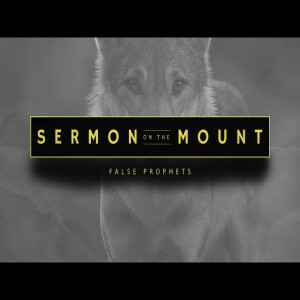
Sunday May 18, 2025
Sunday May 18, 2025
trim(replace(Sermon on the Mount - False Prophets
Understanding False Prophets and the Idolatry of Control
During this Founded in Truth Fellowship teaching, the focus is on identifying and understanding false prophets, as outlined by Yeshua in his sermon on the mount. The speaker, potentially Matthew Vander Els, links this to modern-day situations where control and fear manipulate our actions, often leading us away from the kingdom of God.
One of the critical issues discussed is the human tendency to grab onto control in response to fear. This need for control can lead to destructive behaviors in relationships and communities, driven by an inner fear that prompts us to hold onto power at any cost. We are challenged to recognize these tendencies within ourselves and to release them to God instead.
The Challenge of Discernment
The teaching goes into the difficulty of discerning true intentions, particularly in the context of spiritual leadership. False prophets are not always obvious and can often appear as insiders—those who outwardly seem to belong to the community but inwardly have ulterior motives. The text challenges believers to consider whether their actions and hearts align with Yeshua's kingdom values.
Yeshua's words about the narrow and broad paths are revisited, emphasizing that the narrow path is difficult, unpopular, and challenging, yet leads to life. This path requires followers to live by the kingdom's counter-cultural values, prioritizing mercy, love, and justice over power and control.
The Historical and Biblical Context
The teaching surveys biblical history to illustrate the tension between true and false voices throughout Israel's narrative. The prophets frequently warned against corrupt leadership in Israel, likening them to wolves in sheep's clothing—vicious predators disguised as caretakers. The biblical story underscores that this is not only a theological issue but a prevalent human problem.
Key biblical passages include Yeshua's warning in Matthew 7:15-20 about recognizing false prophets by their fruits, drawing a parallel with practices of religious leaders who appeared righteous but exploited their people. The connection is made between the prophets' critiques of Israel and the teachings of Yeshua, both of which emphasize ethical conduct over mere ritual adherence.
False Prophets Then and Now
Yeshua's metaphor of wolves in sheep's clothing is examined, revealing that false prophets won't always be identifiable by outward appearances. Wolves are known for their cunning and ability to disguise themselves within the flock, posing a substantial threat from within. This metaphor remains relevant today, warning believers of those who exploit faith for personal gain while sidestepping kingdom ethics.
The imagery of trees and their fruits is used to illustrate that true intentions are revealed through actions over time. A good tree bears good fruit, while a bad tree cannot. This analogy serves as a criterion for discerning the authenticity of spiritual leaders and their alignment with God's kingdom.
The Trap of Control
Special emphasis is placed on how fear and past traumas can lead individuals to seek control over their environments, relationships, and even their interpretation of divine guidance. This need for control can often masquerade as religious zeal, leading individuals to justify manipulation or harsh actions in the name of faith.
The speaker warns against conflating one's inner monologue with the voice of the Holy Spirit when past wounds influence perceptions and decisions. Such conflation turns personal biases into perceived divine mandates, risking harm to oneself and others.
Application and Self-Reflection
To counter these tendencies, believers are encouraged to embrace a lifestyle of humility, justice, and mercy—hallmarks of the narrow path. The sermon calls for introspection in moments of emotional upheaval, urging individuals to pause, reflect, and seek divine guidance before acting. This practice can prevent actions driven by fear or control from taking root.
Examine your motives: Are they aligned with God's kingdom ethics or driven by fear?
Beware of the subtle ways fear can influence actions and decisions.
Develop discernment to recognize true and false prophets by their fruits.
Practice humility and justice as foundational values in all interactions.
Regularly pause for reflection and seek divine guidance in challenging situations.
Conclusion
The message concludes with a challenge to embody the values of Yeshua by walking the narrow path, resisting the urge to control, and bearing fruit that reflects the kingdom of God. It invites believers to confront personal fears and past traumas, ensuring they do not subtly guide actions in ways contrary to Yeshua's teachings.
The overarching point of the message is a call to vigilance, both in identifying wolves in our midst and in recognizing the potential for such tendencies within ourselves. By aligning with the true values of God's kingdom, believers can ensure they remain on the path that leads to life.
Bible Verses Mentioned
Matthew 7:15
Matthew 7:16
Ezekiel 22:27
Amos 2:7
Isaiah 1:11
Jeremiah 7
Recommended Books
The Prophetic Imagination by Walter Brueggemann
Surprised by Hope by N.T. Wright
Renovation of the Heart by Dallas Willard
For more Bible Teachings, click here.Note: This article contains affiliate links.; "```html|\n|```"; ""))
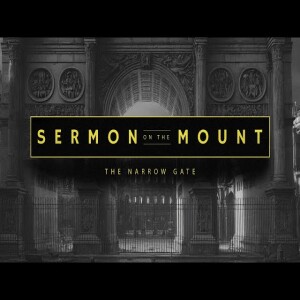
Sunday May 11, 2025
Sunday May 11, 2025
Sermon on the Mount - The Narrow Gate
Exploring the Sermon on the Mount
Shabbat Shalom! As we conclude our journey through the Sermon on the Mount, we are reminded of its profound significance as the manifesto of the kingdom of God, as preached by Yeshua. This series has been a deep exploration into what it truly means to follow Him, challenging us to invert our worldly perspectives. The teachings of Yeshua push us to reconsider our actions, question our loyalties, and evaluate where our true commitments lie. A pivotal point in Yeshua's sermon is Matthew 7:13, where he says, "Enter through the narrow gate, for the gate is wide and the road is easy that leads to destruction, and many enter through it."
The Symbolism of Gates
Gates have historically symbolized power, security, and identity. In ancient times, gates were not just doors but represented larger ideas. They were places where judgments were made and where cities showcased their dominance. The wide gates of cities like Rome epitomized imperial power, exemplified through structures like the Arch of Titus. These gates celebrated military victories and were adorned with reliefs depicting battles and deities. Such symbols stood as constant reminders of the empire's strength, a stark contrast to Yeshua's call to enter through the narrow gate.
The Broad and Narrow Gates
Yeshua's message contrasts the broad and narrow gates. The broad road is likened to the world and its empires, promising ease and acceptance but ultimately leading to ruin. It's a path that accommodates crowds, appealing to comfort and conformity. On the other hand, the narrow gate symbolizes a life of intentionality and commitment to the kingdom values Yeshua preached. It is a solitary path, challenging but leading to life.
Historical Context and Yeshua's Radical Call
Matthew Vander Els connects ancient historical examples to illustrate the broader implications of Yeshua's teachings. Rome's grand arches, such as those built by Titus and Constantine, celebrated military conquests and imperial power. The Arch of Constantine, for example, marked a turning point when Christianity became entwined with Roman imperialism. Despite Constantine's supposed vision, the arch displays pagan symbols, highlighting the tension between true allegiance to Yeshua and conformity to worldly power.
Choosing the Narrow Gate in Today's World
Yeshua's imagery of the narrow gate is deeply rooted in the Hebrew Bible, where life is depicted as a journey full of choices. The dual paths recall the Garden of Eden, Cain's decision, Noah's Ark, and Passover, each representing a spiritual threshold. These narratives illustrate that true allegiance requires deliberate choices, aligning with God's kingdom rather than the world's systems.
Real-World Applications and Challenges
The call to walk through the narrow gate continues today, challenging us to live counterculturally. This means choosing love over hatred, forgiveness over retaliation, and humility over pride. It involves the practical application of Yeshua's teachings, such as loving our enemies, practicing radical generosity, and standing for justice. These actions require a heart commitment, not just external adherence to religious norms.
Love Your Enemies: Actively pray for those who oppose you, transforming enmity into compassion.
Forgive Authentically: Choose forgiveness when retaliation feels justified, releasing bitterness and offering mercy.
Practice Generosity: Share resources and prioritize community, rejecting consumerism's false promises of happiness.
Embrace Humility: Lay down the need for control and recognition, standing for justice without self-interest.
Engage with Empathy: Approach others with understanding, even when cultural differences arise.
Sophie's Example and the Cost of the Narrow Path
Sophie Scholl, a young woman in Nazi Germany, serves as an inspiration for choosing the narrow path. Her courage to distribute pamphlets against the Nazi regime, at great personal cost, exemplifies the sacrificial nature of following Yeshua. Her story challenges us to consider the broad roads that tempt us today and to choose the narrow path even when it is costly.
Conclusion: A Call to Allegiance
Yeshua's teachings invite us to make intentional choices that reflect true allegiance to His kingdom. It's a call to live out our faith not just in words but through our daily actions and decisions. As we face our own gates and thresholds, may we choose the path that aligns with the values of love, justice, and humility that define the kingdom of God.
For more Bible Teachings, click here.
Referenced Bible Verses
Matthew 7:13
Joshua 4
Genesis 3:24
Psalm 1
Deuteronomy 30:19
Recommended Resources
Simply Jesus by N.T. Wright
The Divine Conspiracy by Dallas Willard
The Bible Project by Tim Mackie
Note: This article contains affiliate links.

Saturday Mar 29, 2025
Saturday Mar 29, 2025
Blood and Water: Echoes of Exodus in the New Testament
In this teaching from Founded in Truth Fellowship, the speaker relates the narrative of Passover, not merely as a historical event, but as a profound biblical motif that finds its culmination in the New Testament. This message, inspired by Matthew Vander Els, dives into how the Exodus story and its themes reverberate through the scriptures, ultimately pointing to Jesus (Yeshua) as the one who completes and transforms the narrative of liberation and creation.
The Story of Passover Beyond History
The teaching opens with a discussion on John's Gospel, highlighting how the authors of the New Testament were intentional in crafting their narratives to reveal deeper truths. John's account is particularly noted for its selective inclusion of stories, aiming to present Jesus as the climax of the biblical narrative. This underscores that the Bible isn't just a collection of historical events but a cohesive story about God's rescue mission through Jesus.
The Motif of Water and New Creation
Drawing parallels from Genesis to Exodus, the speaker explores the recurring motif of water and dry land as symbols of new creation and liberation. The Exodus story, particularly the crossing of the Red Sea (Exodus 14), is paralleled with the creation account in Genesis, where God brings forth life from the chaos of waters. This pattern continues with the Israelites crossing the Jordan River into the Promised Land, symbolizing God's rest and new creation for His people.
Israel's Downfall and the Promise of a New Exodus
The narrative of Israel's journey into Canaan and their eventual downfall is examined through the lens of the kingship of Solomon, who epitomized a drift from God's intentions. The speaker emphasizes how Israel, once liberated, began to emulate oppressive empires, leading to their exile. However, the prophets foresaw a new Exodus, one that would transcend physical liberation and bring spiritual renewal through a new creation.
John the Baptist and the New Exodus
The teaching delves into the role of John the Baptist, who, in the wilderness, heralded the coming of this new Exodus. All four gospel accounts draw from Isaiah's imagery of the wilderness as a place of transformation, inviting people to prepare for the Lord's coming and the new creation He brings. John is depicted as a voice calling people out of bondage into a transformative encounter with God.
Yeshua as the Fulfillment of the Exodus
The narratives of Matthew and John are highlighted for their emphasis on Jesus as the fulfillment of the Exodus. Matthew parallels Yeshua's life with Moses, drawing connections between their childhoods and missions. John, on the other hand, uses Passover imagery to present Yeshua as the Lamb of God, the ultimate liberator who takes away the sins of the world. The speaker notes John's unique portrayal of Yeshua's crucifixion as the ultimate Passover sacrifice, highlighting His role in initiating a new creation.
The New Creation Reality
The narrative reaches its crescendo with Yeshua's resurrection, depicted as the inauguration of new creation. His appearance to Mary Magdalene in the garden symbolizes the reopening of Eden, a return to the intended communion between God and humanity. The teaching underscores the transformative power of Yeshua's resurrection, inviting believers to embrace the new creation reality and let go of their chains of sin and death.
Takeaways and Life Applications
Recognize the Bible as a unified story, with the Exodus motif pointing to liberation and new creation through Yeshua.
Understand the deeper themes in biblical narratives, such as water and new creation, and their significance in God's rescue mission.
Reflect on the parallels between old and new Exodus stories, seeing Yeshua as the fulfillment of these motifs.
Embrace the new creation reality, letting go of sin and embracing the freedom that Yeshua provides.
Prepare for the season of Passover and Unleavened Bread by meditating on Yeshua's transformative work.
Engage with the teachings of the prophets and the New Testament authors to fully appreciate the narrative of liberation and renewal.
Bible Verses Mentioned
John 21:25
Exodus 14
Genesis 1
1 Kings 10:14
Isaiah 40
Luke 3:2
John 1:9
John 19
Recommended Resources
The Bible Project by Tim Mackie
The Divine Conspiracy by Dallas Willard
Simply Jesus by N.T. Wright
Being God's Image by Carmen Imes
For more Bible Teachings, click here.
Note: This article contains affiliate links.
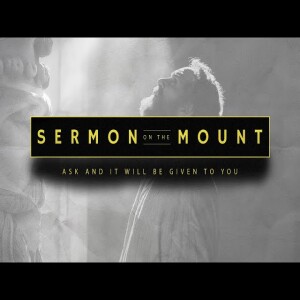
Sunday Mar 23, 2025
Sunday Mar 23, 2025
Sermon on the Mount - Ask and It Will Be Given to You
This teaching delved into a famous, yet often misunderstood, teaching of Yeshua from the Sermon on the Mount, focusing on the verses "Ask and it will be given to you; seek and you will find; knock and the door will be opened to you" (Matthew 7:7). The speaker, Matthew Vander Els of Founded in Truth Fellowship, explored how these verses invite believers into a deeper relationship with God rather than offering a formula for material gain.
Understanding the Heart of Prayer
The sermon opened with a reflection on how people often approach prayer with a "Veruca Salt" mindset—demanding from God like the spoiled child from "Willy Wonka and the Chocolate Factory." This mindset misconstrues the nature of prayer as a way to manipulate God into fulfilling personal desires instantly. Yeshua’s teaching encourages us to see prayer as a transformative relationship rather than a transactional mechanism. The reference to Dallas Willard’s book, "The Divine Conspiracy," further emphasized the idea that the kingdom of God is present and accessible now, and understanding this kingdom requires learning how to ask, seek, and knock with persistence and faith.
Reinterpreting Ask, Seek, and Knock
The speaker challenged the common interpretation of the verses as guarantees for getting what we want. Instead, the Greek structure of these verbs suggests a call to persistent action: "keep asking, keep seeking, keep knocking." This persistence is not about coercing God but about remaining open to His presence and guidance, even when immediate answers aren't evident. Through this lens, prayer becomes about becoming more aligned with God's will and growing into the people God calls us to be.
Prayer as Relationship, Not Transaction
The teaching highlighted the difference between treating prayer as a way to extract favors from God and engaging in it as an evolving relationship. Mature faith shifts the focus from demanding specific outcomes to trusting in God's good nature and His timing. The speaker used personal anecdotes to illustrate how God's answers may not align with our immediate desires but can lead to personal growth and strengthened faith.
The Role of Trust and Faithfulness
Yeshua's invitation to ask, seek, and knock is fundamentally an invitation to trust in God's goodness and faithfulness. The teaching emphasized that God is a loving Father who gives good gifts, contrasting this with the image of an indifferent or punitive deity. This perception of God shapes how we approach prayer and trust in His provision.
Living in the Kingdom Now
Matthew Vander Els tied the teaching to the broader theme of living in God's kingdom now. By engaging in persistent prayer, believers participate in the kingdom's unfolding on earth. This perspective reframes prayer as transformative not only for individuals but also for the world, encouraging engagement with social justice issues and community needs.
Desmond Tutu and Persistent Faith
An inspiring example of persistent faith was shared through the story of Desmond Tutu, who fought against apartheid in South Africa through non-violence and prayer. Tutu's life demonstrated how persistence in prayer and faith can lead to societal change, highlighting that the kingdom of God is actively at work in the world.
Key Takeaways and Life Applications
Prayer is about relationship, not transaction. Engage with God in prayer to align with His will and experience transformation.
Persist in asking, seeking, and knocking, trusting that God’s timing and methods may differ from our expectations but are ultimately for our growth.
View prayer as part of living in the kingdom of God now, rather than a tool for personal gain.
Engage with social justice issues as a way to inaugurate God's kingdom on earth, following the example of figures like Desmond Tutu.
Trust in God's goodness as a loving Father who knows and gives what is best for His children.
Conclusion
The message concluded by encouraging believers to continue pursuing God through prayer, emphasizing that God is always near and responsive. The teaching called for a shift from seeing God as a vending machine to viewing Him as a loving Father, where the real gift is not just the answer to prayers but God Himself.
Bible Verses Referenced
Matthew 7:7
Recommended Books and Resources
The Divine Conspiracy by Dallas Willard
Simply Jesus by N.T. Wright
The Lost World of Genesis One by John H. Walton
For more Bible Teachings, click here.
Note: This article contains affiliate links.
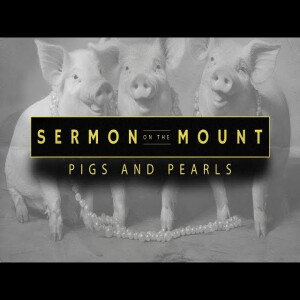
Sunday Mar 16, 2025
Sunday Mar 16, 2025
Sermon on the Mount - Pigs and Pearls
Matthew Vander Els, one of the leading voices at Founded in Truth Fellowship, delivers a profound message about discernment and judgment, based on the teachings of Jesus in the Sermon on the Mount. This teaching dives into the wisdom of distinguishing when, where, and how to apply the principles of faith, especially in relation to others.
Main Themes and Insights
The sermon opens with a reflection on the wisdom literature found in Proverbs, particularly Proverbs 26:4-5, which appears to give contradictory advice about dealing with foolishness. Vander Els points out that this reflects the nuanced nature of wisdom, which is not rigid but rather a guide for discernment in various situations.
A significant portion of the message focuses on Matthew 7, where Jesus warns against judging others. Vander Els emphasizes that the instruction not to judge is not about ignoring wrongdoing but about approaching others with a default of grace, mercy, and love. He relates this to the broader theme of spiritual transformation coming from love and humility, rather than condemnation.
Judgment and Control
Vander Els discusses the human tendency to judge and label others as a form of control, which he suggests is a fruit of the knowledge of good and evil—a role meant for God alone. This leads to societal violence when everyone assumes the role of moral arbiter. He draws a parallel to the pre-Flood narrative, illustrating how divine intervention failed to eradicate human violence, planting an early biblical theme that violence cannot end violence, echoing Jesus' radical teachings on love and forgiveness.
Pearls and Pigs: A Deeper Understanding
The sermon then transitions into an exploration of Matthew 7:6, the verse about not throwing pearls before pigs. Vander Els challenges the traditional interpretation of this verse, urging us to consider why we would give pearls to pigs in the first place. He emphasizes that the pigs in Jesus' metaphor are not the antagonists, but rather victims of misunderstanding—creatures that need sustenance, not valuables they cannot appreciate or use.
This metaphor serves as a potent reminder of how believers sometimes impose spiritual 'pearls' on others instead of addressing their real needs. He cautions against using religion as a means of control, highlighting the importance of wisdom in recognizing and responding to the genuine needs of others.
Practical Applications
Approach others with grace, mercy, and love, as opposed to judgment and condemnation.
Discern the real needs of those around you instead of imposing your spiritual beliefs on them.
Recognize that wisdom involves knowing when to share truth and when to simply be present for others.
Focus on being a vessel for God’s love rather than trying to control or change others for your comfort.
Remember that real transformation is led by love and space for God to work, not by force or coercion.
Wisdom in Action: The Example of Solomon
Vander Els uses the example of King Solomon's wisdom in 1 Kings 3 as an illustration of how discernment and true wisdom can lead to justice without condemnation. Solomon's decision in the case of the two women arguing over a child highlights his ability to address immediate needs without delving into their moral failings.
By handling the situation with discernment rather than judgment, Solomon exemplified the wisdom that Jesus calls us to in dealing with others. The ability to see beyond the surface and provide what is truly needed is at the heart of the message.
Conclusion and Reflection
The sermon ends with a challenge: will we walk in discernment and not condemnation? This question invites listeners to reflect on their own lives and interactions with others, encouraging a shift towards grace-filled relationships that allow God’s love to lead to genuine transformation.
For more Bible Teachings, click here.
Bible Verses Referenced
Proverbs 26:4
Proverbs 26:5
Matthew 7:1
Matthew 7:6
1 Kings 3:16-28
Recommended Resources
The Divine Conspiracy by Dallas Willard
Simply Jesus by N.T. Wright
Bear Your Name by Carmen Imes
Note: This article contains affiliate links.
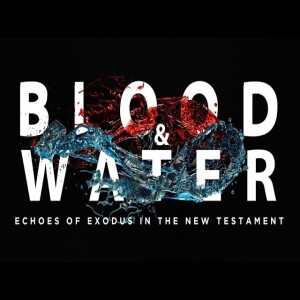
Saturday Nov 30, 2024
Saturday Nov 30, 2024
Blood and Water: Echoes of Exodus in the New Testament
Shabbat Shalom, everyone. Today we delve into the profound significance of Passover, not merely as a historical event, but as a narrative thread that God has woven into the Scriptures to reveal a grander story. As we approach Passover, this teaching aims to illuminate the echoes of Exodus found throughout the New Testament, highlighting Jesus, or Yeshua, as the centerpiece of this narrative, the Passover lamb who liberates us from sin and death. Let's explore how these themes unfold, starting with the unique portrayal of Jesus in the Gospel of John.
The Gospel of John: Crafting a Unique Narrative
We begin by examining John 21:25, where the Gospel of John is described as a curated account of Jesus's life, not merely a historical record, but a purposeful narrative emphasizing specific themes. John, the 'black sheep' of the Gospels as it is sometimes called, creates a film-like portrayal, intentionally highlighting Jesus as the fulfillment of the Exodus story. This Gospel doesn't just document events; it tells a story of new creation and redemption through Jesus, the true Passover lamb.
Patterns of Creation and New Creation
The Exodus story parallels the creation narrative in Genesis. Just as God divided the waters to bring forth dry land in Genesis, He did the same at the Red Sea, symbolizing a new creation for Israel. This motif of water and new creation echoes throughout the Scriptures, from Noah's flood to Israel's crossing of the Jordan River into the Promised Land. The wilderness journey is depicted as a transition into God's rest, akin to the Garden of Eden, suggesting a cycle of redemption and new beginnings.
Israel's Journey and the Prophetic Hope
Despite entering the Promised Land, Israel eventually becomes what it sought to escape, mirroring Egypt through power and oppression. King Solomon's reign, marked by military might and wealth, leads to their downfall and eventual exile. The exilic prophets, like Isaiah and Jeremiah, envision a new Exodus, not just from physical bondage but from the spiritual bondage of sin. Isaiah's imagery of a highway in the wilderness leading to God symbolizes this new pathway of redemption.
New Testament Fulfillment in Yeshua
The New Testament Gospels begin with John the Baptist in the wilderness, echoing Isaiah's prophetic voice. The Gospels, especially Matthew and John, emphasize the new Exodus through Yeshua. Matthew portrays Yeshua as a new Moses, drawing parallels to Moses’s life, while John uses Passover imagery to underscore Yeshua's role as the lamb who takes away the sins of the world. This intentional storytelling highlights the shift from old creation to new creation.
Key Takeaways and Life Applications
Recognize the recurring motif of water and new creation, signifying God's ongoing work of redemption.
Understand the Gospels as purposeful narratives that emphasize Yeshua's fulfillment of the Exodus story.
See Passover not just as a historical event, but as a living narrative of liberation from spiritual bondage.
Embrace the invitation into new creation, leaving behind the chains of sin, shame, and old creation.
Reflect on personal areas of bondage and seek the transformative freedom offered through Yeshua.
Join the greater narrative of redemption, engaging in the new creation reality in everyday life.
Biblical References
John 21:25
Exodus 14
Genesis 1
1 Kings 10:14
Isaiah 40:3
John 1
Exodus 12
Zechariah 12:10
John 19:34
John 20:22
Revelation 22
Ezekiel 37
Recommended Resources
The Bible Project by Tim Mackie
The Divine Conspiracy by Dallas Willard
Simply Jesus by N.T. Wright
Bearing God's Name by Carmen Imes
For more Bible Teachings, click here.
Note: This article contains affiliate links.
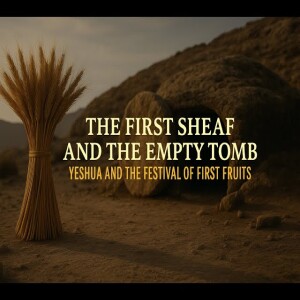
Saturday Apr 20, 2024
Saturday Apr 20, 2024
The First Sheaf and the Empty Tomb
Welcome to the teaching from Founded in Truth Fellowship, delivered by Matthew Vander Els. Today we delve into the profound significance of Yom HaBikrim, the Feast of First Fruits. This seemingly minor festival emerges as a theological keystone, intimately connected to the resurrection of Yeshua (Jesus) and our understanding of new creation.
The Overlooked Festival
While Passover and Shavuot command the spotlight with their dramatic narratives of liberation and divine empowerment, Yom HaBikrim quietly marks a pivotal moment in the biblical calendar. In Leviticus 23, the command to present the first sheaf of barley before the Lord symbolizes the promise and sanctity of the entire harvest to come. The Hebrew word reshit, meaning "the first" or "beginning," connects this ritual to Genesis, where creation itself was initiated (Genesis 1:1).
This sermon emphasizes the alignment between the act of presenting the first sheaf and Yeshua's resurrection. Both signify the onset of a new creation, bridging the old world and the world to come, and setting a pattern for God's promise to renew all creation.
Resurrection: The Promise of New Creation
Yeshua’s resurrection, happening on the day of First Fruits, is not simply a display of divine power but a foretaste of the new creation, a down payment on the cosmic renewal that God is orchestrating. This reframes our worldview; rather than viewing resurrection solely as an escape, we see it as the beginning of the kingdom's work here on earth.
The resurrection is not just about Him; it involves all of us. As Paul writes in 1 Corinthians 15, Yeshua is the "firstfruits" of those who have fallen asleep, indicating that His resurrection is the start of the final harvest when God’s kingdom will be fulfilled.
Living in the Rhythm of Resurrection
This teaching urges us to live as people who anticipate the full harvest. The resurrection life should permeate our daily actions, influencing how we love, forgive, and give. Our lives mirror the first sheaf, offered in trust that the full harvest of God’s kingdom is coming.
Empathy for others, as discussed, is central to this new life. Recognizing that everyone has their own struggles helps us respond with grace rather than retaliation. The idea is to love and forgive as Yeshua did, transforming our relationships and communities.
The rhythm of resurrection also involves our finances. Tithing the first of our income symbolizes trust in God's provision and participation in His kingdom work. This sacrificial giving aligns with the pattern of new creation, reinforcing our reliance on divine grace rather than self-sufficiency.
The Image of a Gardener
John’s Gospel places Yeshua's resurrection in a garden, drawing a literary and theological parallel to Eden. As the "last Adam" (1 Corinthians 15), Yeshua, the gardener, cultivates new life where the first Adam introduced death. This imagery signifies the reversal of the curse and the birth of a new Eden, where resurrection life continually grows.
In this garden, Mary mistakes Yeshua for a gardener, which is theologically profound. It affirms His role in nurturing new creation, signifying a world that will be restored and renewed. The empty tomb signals the beginning of this process, as the gardener awakens to tend and transform the soil of creation.
Practical Takeaways
Live in anticipation of the full harvest: Let the hope of resurrection guide your actions and decisions.
Embrace empathy and forgiveness: See others through the lens of grace, understanding, and love.
Participate in creation's renewal: Engage in acts of service, love, and community building as signposts of the kingdom.
Sacrificial giving: Trust in God's provision by offering your first fruits as an act of faith and alignment with His purposes.
Resist conformity: Stand firm in your faith, resisting societal pressures that conflict with kingdom values.
Conclusion
The message concludes with a powerful call to align our lives with the rhythm of resurrection, living as those who have tasted new creation and are awaiting its full realization. It’s a call to be co-gardeners with Yeshua, participating in the great harvest that has begun and will culminate in the fulfillment of God’s promises.
Bible Verses Referenced
Genesis 1:1
Leviticus 23:9
1 Corinthians 15:20
2 Corinthians 5:17
James 1:18
Recommended Resources
Surprised by Hope by N.T. Wright
The Divine Conspiracy by Dallas Willard
For more Bible Teachings, click here.
Note: This article contains affiliate links.
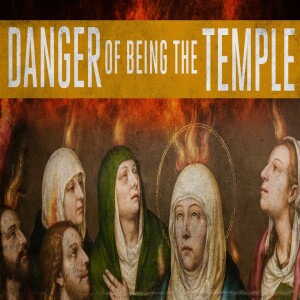
Saturday Sep 03, 2022
Saturday Sep 03, 2022
The Danger of Being the Temple - Ananias and Sapphira
In a compelling Bible Teachings delivered at Founded in Truth Fellowship, Matthew Vander Els explored the profound significance of participating in the community of God and the serious consequences of approaching this sacred connection with anything less than complete honesty and commitment. Drawing extensively from both the Old and New Testaments, the teaching centered on the cautionary tale of Ananias and Sapphira in the book of Acts, illuminating the dangers of hypocrisy within the fellowship of believers.
The speaker began by establishing a foundational understanding of God's relationship with humanity, referencing the Old Testament and the boundaries God set for Israel to be a people set apart. These boundaries, encompassing distinctions between clean and unclean, holy and profane, were intended to honor God, even extending to practices like abstaining from pork. While some of these regulations were tied to the physical Tabernacle, they represented a commitment to honoring God's holiness. The state of being unclean, though not inherently sinful, restricted access to God's presence in the Tabernacle, acting as a separation from the intimate dwelling of the divine. Examples such as childbirth, bodily discharges, certain diseases, and contact with dead animals or bodies led to this temporary state of uncleanness.
However, as time progressed in Israelite culture, these practices, initially rooted in respect for God's presence, gradually transformed into a checklist for affirming one's identity within the Covenant. This shift intensified after the Babylonian exile and the Maccabean Revolt, when adherence to these commandments became markers of Judean identity, a way to distinguish themselves from the surrounding cultures. The speaker highlighted how Yeshua, or Jesus, strongly criticized the Pharisees for this very mindset. Their emphasis on outward displays of holiness led them to judge others based on their adherence to these self-imposed checklists, neglecting the crucial aspect of inner transformation and the heart of God. Yeshua condemned their hypocrisy, comparing them to beautiful cups filled with decay and whitewashed tombs concealing death. Turning faith into a means of self-exaltation and judgment of others, according to the teaching, amounts to idolatry, placing one's own perceived value above God's true intentions.
The teaching then transitioned to the concept of God's dwelling place throughout history. Initially, God's presence was associated with the holy mountain, Mount Sinai. This presence then moved to the Tabernacle, a tent, and later to the Temple in Jerusalem. In each case, the holiness of the location stemmed not from its physical structure but from God's dwelling within it. The New Testament introduces a radical shift in this understanding. Yeshua proclaimed that he himself was the new Temple, as seen in John chapter 2 when he spoke of destroying the temple and raising it again in three days, referring to his own body. This marked a transition where God's presence would no longer be confined to a physical building but would reside within individuals.
The speaker elaborated on this New Testament understanding, citing passages from Ephesians, 1 Peter, and 1 Corinthians. Believers are described as being built together as a spiritual house, with Christ Jesus as the chief cornerstone. Individually, the body of a believer is the temple of the Holy Spirit. This indwelling of the Holy Spirit signifies that believers have become sacred, set apart not through their own merit but because of God's presence within them. This new reality brings immense privilege but also carries significant responsibility.
To illustrate the seriousness of this new covenant relationship, the teaching focused on the story of Ananias and Sapphira in Acts chapter 5. The early Christian community was characterized by a remarkable unity and generosity, with believers sharing their possessions and ensuring that no one was in need. Barnabas is presented as a positive example, selling a field and laying the proceeds at the apostles' feet. In stark contrast, Ananias and Sapphira sold a piece of property but secretly kept back a portion of the money for themselves while presenting the rest as the full amount. Peter, recognizing their deceit, confronted Ananias, stating that he had not lied to humans but to God, to the Holy Spirit. The immediate and severe consequence was Ananias's death, followed shortly by Sapphira's when she corroborated the lie.
The speaker emphasized that the harshness of this event underscores a crucial point: participating in the community of God is not a trivial matter. With the gift of the Holy Spirit comes the ability to manifest God's presence in the world, demanding reverence, respect, and honor. Ananias and Sapphira's temptation was to appear loyal to the community and receive honor while also being deceptive for their own gain. Their sin was not merely withholding money but bringing a divisive and deceptive spirit into the holy community. It was a form of partial commitment, offering some to God and some to their own selfish desires. This act devalued the significance of being part of God's dwelling place and the power of the Holy Spirit within them.
Drawing a parallel to the Old Testament, the speaker referenced the story of Nadab and Abihu, the sons of Aaron, who offered unauthorized or "strange" fire before the Lord in Leviticus chapter 10. Their transgression, though not explicitly detailed, appeared to be an encroachment on the holiness of God's dwelling place, resulting in their immediate death. Just as Nadab and Abihu approached God with incorrect protocol, Ananias and Sapphira approached the new temple, the community of believers indwelt by the Holy Spirit, with deception and partial loyalty.
The teaching highlighted that being the temple of God is an incredible privilege and opportunity to participate in God's plan. However, there is a danger in attempting to manipulate this sacred reality or treat it as commonplace. True participation requires a transformed heart, evident not in outward displays of a checklist of rules but in how one responds to others, the extent of their generosity, forgiveness, and mercy. The world often operates on principles of withholding forgiveness, limiting grace, and prioritizing selfish gain. In contrast, followers of Yeshua are called to embody the character of God, offering forgiveness, extending grace, showing mercy, and practicing radical generosity.
Application for Everyday Life:
Examine your motives: Regularly assess your reasons for participating in your faith community. Are they rooted in genuine love for God and others, or are there elements of self-seeking or a desire for outward approval?
Embrace wholehearted commitment: Avoid partial loyalty in your relationship with God and your faith community. Strive for complete dedication and honesty in your actions and intentions.
Practice radical generosity: Look for opportunities to give generously of your time, resources, and talents, following the example of the early believers.
Extend forgiveness and mercy: In your interactions with others, even those who may seem undeserving, choose to offer forgiveness and mercy, mirroring God's character.
Cultivate inner transformation: Focus on the condition of your heart rather than solely on outward religious practices. Allow God's Spirit to transform you from the inside out.
Recognize the sacredness of the community: Understand that as believers indwelt by the Holy Spirit, you and your faith community are the temple of God, deserving of reverence and respect.
Be honest and transparent: Avoid hypocrisy and deception in your dealings with God and your fellow believers.
Bear the weight of responsibility: Recognize the privilege and responsibility that comes with being a dwelling place for God's Spirit and actively participate in God's mission in the world.
Note: This article contains affiliate links.






